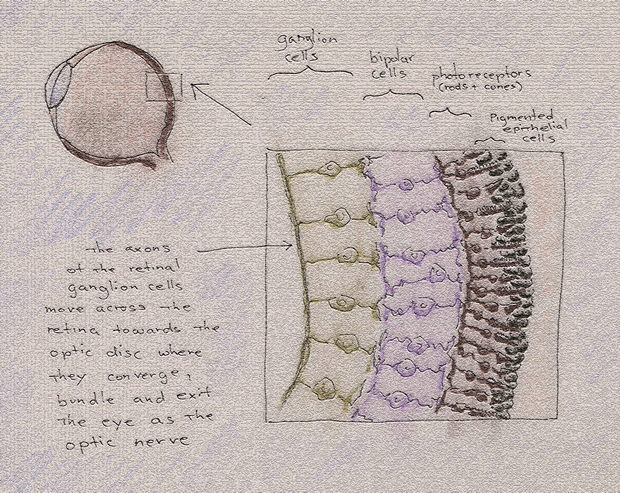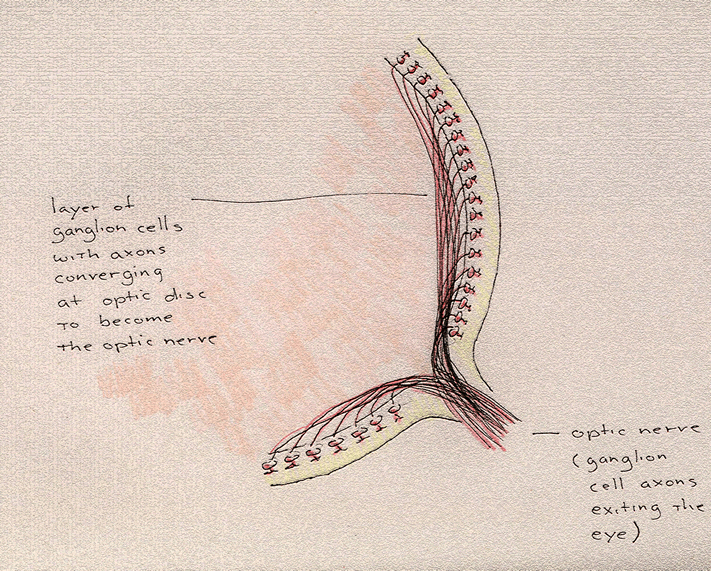Eye
So, where are we?
As light makes its way towards our eye, it first passes through the transparent tissue of the cornea, which alters the speed and thus the course of the train of photons. Their course is further bent or refracted by the lens and the combined effects of the cornea and lens do generally focus the light upon the photosensitive membrane that is the retina.
.gif)
The Retina
The retina, despite its microscopically thin appearance, is composed of three major cell layers and two interposing layers of neuropil, areas in which the aforesaid cells come to synapse with one another.
The posterior-most layer contains the photoreceptors, commonly described as rods and cones. This placement of the light-receiving cells, behind bipolar and ganglion cell layers, strikes everyone as wantonly peculiar. Surely, those intervening cell bodies, dendritic processes and axons must interfere with the light, blur the image. Surely. —But, in truth, the cells are largely transparent and, as their axons are not myelinated (sheathed in milky white glial cells), they are too thin to register. Still, there where visual acuity is concentrated—in the fovea—the cells and their processes are pushed aside and the cones are brought forward for unfettered receipt of the light stream of photons.

(Note that the outer segments of the rods and cones are embedded in epithelial cells containing the pigment melanin. This cell layer constitutes the retinal pigment epithelium, which removes discarded photoreceptor discs through phagocytotic processes and prevents photons that have slightly overshot a photoreceptor from stimulating neighboring ones to no visual avail. Such an event would merely add noise to the signal, blur the image—rather like striking the C and B flat keys of the piano instead of the lone intended C.)
But to return to the gross structure of the retina proper, the photoreceptors synapse upon processes in the next layer out: that containing the dendrites of bipolar cells whose interactions may be mediated by the presence of horizontal cells.
The bipolar cells synapse, in turn, upon the dendrites of ganglion cells and their interactions may also be mediated—but in this instance, in this layer—by the presence of amacrine cells.
We have now reached the outermost layer of cells—the retinal ganglion cells—whose axons move across the retina towards the optic disc where they converge, bundle and exit the eye as the optic nerve.
